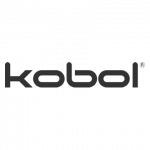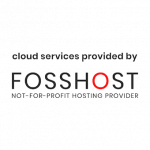IMPORTANT NOTE: IF YOU HAVE OR BUY A 4 GB RAM ALLWINNER H6 TVBOX, REMEMBER, KERNEL WILL SEE ONLY 3 OF 4 GB OF RAM. REMENBER!!!
how to install HomeAssistant Supervised on Allwinner H6 TvBoxes
repeate, only Android TVBOXES with Allwinner H6 CPU are comatible with this system!
ok let's go!
you can:
-----> 1) compile theese sources from original armbian githib
or
-----> 2) download reasy2go system with Homeassistant Supervised installed. ( based on: Armbian 22.11.0-trunk Bullseye with Linux 5.15.69-sunxi64 )
1-) you need:
an HDMI LCD and an USB keyboard to 1st time configure system;
balenaetcher tool to flash system into a microSD
use the system (arbian.img file compiled)
flash microSD with balenaetcher, choose the .img file, and flash it
connect the TVBOX to a LAN CABLE...
insert microSD into Allwinner H6 CPU TVBOX and power on it... it boots on armbian...
configure system, set password for root user and new user (I suggest pi name!)
into shell type:
sudo armbian-config, menu 2; manage wifi and choice your own wifi (SSID), insert password and connect to it (and can also set static IP!)
winscp and putty to: configure all needed to install docker and homeassistant supervised as next explained
open winscp, new connection and inser tvbox ip, usenrname and password, connect
now open shell, putty, (2 pc icon on top/left of winscp window)
type:
sudo apt update
sudo apt upgrade
###this is permanent command
sudo echo -e "\noverlay\nnft_chain_nat\nnft_counter\nnft_compat\nnf_tables\n" >> /etc/modules-load.d/modules.conf
###this is temlorary command
sudo modprobe overlay && sudo modprobe nft_chain_nat && sudo modprobe nft_counter && sudo modprobe nft_compat && sudo modprobe nf_tables
from this link
https://github.com/home-assistant/supervised-installer
ans this one
https://github.com/home-assistant/os-agent/tree/main#using-home-assistant-supervised-on-debian
choice the .deb file for you archotecture (aarch64), so:
os-agent_1.3.0_linux_aarch64.deb
copy it using winscp into /tmp folder of your tvbox (from tab on left to the tab on right selectin the tmp folder before copy)
so into shell type:
wget https://github.com/home-assistant/os-agent/releases/download/1.3.0/os-agent_1.4.1_linux_aarch64.deb
sudo dpkg -i os-agent_1.4.1_linux_aarch64.deb
continue to follow also this guide:
https://github.com/home-assistant/supervised-installer
and in graphic window choice the target system to instll HA: raspberry4-64bit (is good even debian system is.....)
***if that window doesn't appear, use theese commands:
sudo apt --fix-missing update
sudo apt-get update --fix-missing
sudo apt-get install jq wget curl avahi-daemon udisks2 libglib2.0-bin network-manager dbus apparmor -y
sudo dpkg -i homeassistant-supervised.deb
now...
wait for 20/30 minutes and finally, connect to:
2-)
download ready2go system from releases in thi github
and you need also:
an HDMI LCD and an USB keyboard to 1st time configure system;
balenaetcher tool to flash system into a microSD
use the system (arbian.img.gz image)
flash microSD with balenaetcher, choose the .img.gz system file, and flash it
connect the TVBOX to a LAN CABLE...
insert microSD into Allwinner H6 CPU TVBOX and power on it... armbian starts...
into shell type:
sudo ifconfig so you can see the assigned IP.
now by winscp you can connect and have 2 user ready:
root (password: root)
pi (passwor pi)
new connection on winscp, insert tvbox ip
usenrame:pi; password:pi
open remote shell
and type:
sudo passwd root
(insert as asked pi password, so pi)
insert new root password twice,
repeat:
sudo passwd pi
insert new pi password twice
ok, you now changed default root and pi password, write them somewhere ro remember if needed
sudo armbian-config, menu 2; manage wifi and choice your own wifi (SSID), insert password and connect to it (and can also set static IP!)
if you have wrong feee space on microsd, by shell write:
sudo bash /etc/init.d/resize2fs start
sudo reboot
now...
write on shell:
sudo armbian-config,
menu 2; manage wifi and choice your own wifi (SSID), insert password and connect to it
sudo reboot, wait 20/30 minutes and then you go to:
http://TVBOX-IP:8123 and enjoy
to configure homeassistant.
in both 1 and 2, you can trasnfer system into internal EMMC, but if you overwrite internal emmc, you lost Android preinstalled system.
so cute:
sudo armbian-config
and menu 1, choice to write system into internal emmc, voice nr:2, wait 5 minutes and then shut down system, remove microsd
and power on tvbox, now it boots on internal emmc (some devices have NAND flash and not emmc, so, cannot boot from internal HHD, continue to use microsd to boot armbian)
<> <> <> <> <>
sudo dockerd
- What this project does?
- Getting started
- Compare with industry standards
- Download prebuilt images
- Project structure
- Contribution
- Support
- Contact
- Contributors
- Sponsors
- License
- Builds custom kernel, image or a distribution optimized for low resource HW such as single board computers,
- Include filesystem generation, low-level control software, kernel image and bootloader compilation,
- Provides a consistent user experience by keeping system standards across different platforms.
- x64 or aarch64 machine with at least 2GB of memory and ~35GB of disk space for a virtual machine, container or bare metal installation,
- Ubuntu Jammy 22.04 x64 or aarch64 for native building or any Docker capable x64 / aarch64 Linux for containerised,
- Superuser rights (configured sudo or root access).
apt-get -y install git
git clone https://github.com/armbian/build
cd build
./compile.sh- Interactive graphical interface.
- The workspace will be prepared by installing the necessary dependencies and sources.
- It guides the entire process until a kernel package or ready-to-use image of the SD card is created.
Show work in progress areas in interactive mode:
./compile.sh EXPERT="yes"Run build framework inside Docker container:
./compile.sh dockerBuild minimal CLI Armbian Focal image for Orangepi Zero. Use modern kernel and write image to the SD card:
./compile.sh \
BOARD=orangepizero \
BRANCH=current \
RELEASE=focal \
BUILD_MINIMAL=yes \
BUILD_DESKTOP=no \
KERNEL_ONLY=no \
KERNEL_CONFIGURE=no \
CARD_DEVICE="/dev/sda"More information:
- Building Armbian — how to start, how to automate;
- Build options — all build options;
- Building with Docker — how to build inside container;
- User configuration — how to add packages, patches and override sources config;
- quarterly released supported builds — https://www.armbian.com/download
- weekly released unsupported community builds — https://github.com/armbian/community
- upon code change unsupported development builds — https://github.com/armbian/build/releases
Check similarity, advantages and disadvantages compared with leading industry standard build software.
| Function | Armbian | Yocto | Buildroot |
|---|---|---|---|
| Target | general purpose | embedded | embedded / IOT |
| U-boot and kernel | compiled from sources | compiled from sources | compiled from sources |
| Board support maintenance | complete | outside | outside |
| Root file system | Debian or Ubuntu based | custom | custom |
| Package manager | APT | any | none |
| Configurability | limited | large | large |
| Initramfs support | yes | yes | yes |
| Getting started | quick | very slow | slow |
| Cross compilation | yes | yes | yes |
├── cache Work / cache directory
│ ├── rootfs Compressed userspace packages cache
│ ├── sources Kernel, u-boot and various drivers sources.
│ ├── toolchains External cross compilers from Linaro™ or ARM™
├── config Packages repository configurations
│ ├── targets.conf Board build target configuration
│ ├── boards Board configurations
│ ├── bootenv Initial boot loaders environments per family
│ ├── bootscripts Initial Boot loaders scripts per family
│ ├── cli CLI packages configurations per distribution
│ ├── desktop Desktop packages configurations per distribution
│ ├── distributions Distributions settings
│ ├── kernel Kernel build configurations per family
│ ├── sources Kernel and u-boot sources locations and scripts
│ ├── templates User configuration templates which populate userpatches
│ └── torrents External compiler and rootfs cache torrents
├── extensions extend build system with specific functionality
├── lib Main build framework libraries
├── output Build artifact
│ └── deb Deb packages
│ └── images Bootable images - RAW or compressed
│ └── debug Patch and build logs
│ └── config Kernel configuration export location
│ └── patch Created patches location
├── packages Support scripts, binary blobs, packages
│ ├── blobs Wallpapers, various configs, closed source bootloaders
│ ├── bsp-cli Automatically added to armbian-bsp-cli package
│ ├── bsp-desktop Automatically added to armbian-bsp-desktopo package
│ ├── bsp Scripts and configs overlay for rootfs
│ └── extras-buildpkgs Optional compilation and packaging engine
├── patch Collection of patches
│ ├── atf ARM trusted firmware
│ ├── kernel Linux kernel patches
| | └── family-branch Per kernel family and branch
│ ├── misc Linux kernel packaging patches
│ └── u-boot Universal boot loader patches
| ├── u-boot-board For specific board
| └── u-boot-family For entire kernel family
├── tools Tools for dealing with kernel patches and configs
└── userpatches User: configuration patching area
├── lib.config User: framework common config/override file
├── config-default.conf User: default user config file
├── customize-image.sh User: script will execute just before closing the image
├── atf User: ARM trusted firmware
├── kernel User: Linux kernel per kernel family
├── misc User: various
└── u-boot User: universal boot loader patches
- The easiest way to help is by "Starring" our repository - it helps more people find our code.
- Check out our list of volunteer positions and choose what you want to do ❤️
- Seed torrents
- Help with forum moderating
- Project administration
- Donate.
Please review the Board Maintainers Procedures and Guidelines and if you can meet the requirements as well as find a board on the Board Maintainers list which has less than 2 maintainers, then please apply using the linked form.
If you want to help with development, you should first review the Development Code Review Procedures and Guidelines and then you can review the pre-made Jira dashboards and additional resources provided below to find open tasks and how you can assist:
- pull requests that needs a review
- dashboard for junior and seniors developers
- documentation
- continuous integration
Armbian is free software and provides best effort help through community forums. Make sure to use help of general project search engine and documentation before opening new forum topic. In case you require attention, buy appropriate subscription level before asking for dedicated attention to the issue you have https://www.armbian.com/contact.
- Forums for Participate in Armbian
- IRC:
#armbianon Libera.chat - Discord: http://discord.armbian.com
- Follow @armbian on Twitter or LinkedIn.
- Bugs: issues / JIRA
Thank you to all the people who already contributed Armbian!
- Current and past contributors, our families and friends.
- Support staff that keeps forums usable.
- Individuals that help with their ideas, reports and donations.
Most of the project is sponsored with a work done by volunteer collaborators, while some part of the project costs are being covered by the industry. We would not be able to get this far without their help.
Would you like your name to appear below?
This software is published under the GPL-2.0 License license.


















